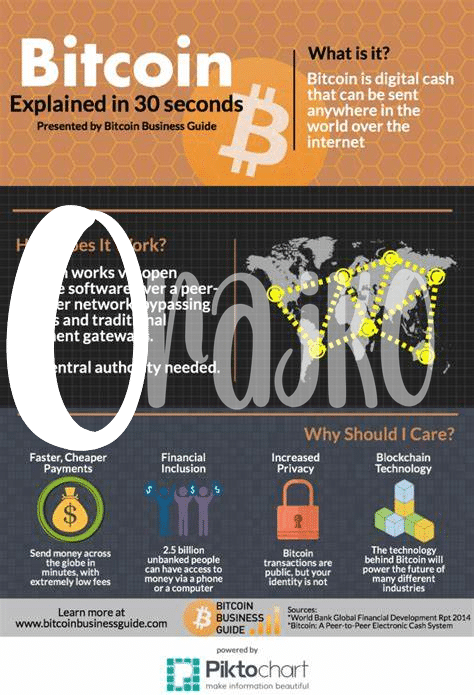Satoshi Nakamoto: the Mystery Creator of Bitcoin 🔍

Imagine a world where one person creates something that could change how we all think about money. That’s exactly what happened over a decade ago when an unknown person or group of people under the name Satoshi Nakamoto introduced Bitcoin to the world. The true identity of Satoshi remains one of the biggest mysteries in the tech world. Despite numerous attempts to unmask this enigmatic figure, they have managed to stay in the shadows, leaving us with nothing but speculations about who they could be.
| Year | Event |
|---|---|
| 2008 | Publication of the Bitcoin White Paper |
| 2009 | Bitcoin Network comes to life |
Satoshi’s creation wasn’t just a technological marvel; it was a concept that challenged the very foundation of how we understand financial transactions. Bitcoin’s design allows for secure, transparent, and decentralized exchanges, moving away from traditional, institution-controlled financial systems. Yet, beyond the technical details and the pseudonymous nature of its creator, Bitcoin sparked a conversation on the future of money, privacy, and the role of transparency in a digital age. Satoshi Nakamoto’s contribution goes beyond the bits and bytes—they laid the groundwork for a new era of digital philanthropy and inclusion.
The Basics of Bitcoin and How It Works 💡
Imagine a world where money isn’t just pieces of paper or metal, but digital coins floating in an invisible space. That’s what Bitcoin is – a digital currency that doesn’t rely on banks to verify transactions. It’s like sending cash digitally. People can send bitcoins to each other using mobile apps or computers, almost as if they were sending an email. This magic happens through something called blockchain, a public list where every transaction gets recorded. It ensures that the same bitcoin isn’t spent twice and builds trust without the need for a middleman.
This digital treasure chest was unlocked by a person (or perhaps a group) known as Satoshi Nakamoto. Yet, beyond creating Bitcoin, they sparked a movement towards a decentralized financial system. For those curious about the deeper implications and safety of Bitcoin, beyond its surface-level understanding, diving into its security aspects and its potential for digital freedom is essential. A thorough exploration can be found here, offering insights into Bitcoin’s role beyond currency.
Bitcoin’s Giant Leap: from Obscurity to Mainstream 🚀

Once upon a time, Bitcoin was a whisper in the digital alley, a secret shared among tech enthusiasts 🤓. But, like a seed finding its way through cracks in concrete, Bitcoin sprouted and stretched towards the sunlight. Imagine telling someone ten years ago that a digital currency, invisible and untouchable, would become as talked about as the dollar or the euro. Yet, here we are! The journey from being an insider secret to a household name wasn’t overnight. It took thrilling highs and heart-stopping lows, fascinating millions with its promise of a decentralized and borderless financial system. Through mainstream media, buzzing social networks, and word-of-mouth, Bitcoin captured the imagination of the masses, finding its way into everyday conversations, investor portfolios, and even coffee shop transactions ☕. This extraordinary leap has not just reshaped our views on money; it’s woven Bitcoin into the very fabric of society.
Bitcoins in Action: Heartwarming Stories of Digital Giving ❤️

Once upon a time, digital coins weren’t just for buying stuff online—they became a beam of hope for many. People from all corners of the globe began using bitcoin to make a real difference. For instance, there was this one time when a massive fundraising campaign was launched on social media. It aimed to provide relief to those affected by a natural disaster. In just a matter of days, hundreds of bitcoins were donated by kind souls everywhere. This digital generosity not only offered immediate aid but also showed the world the powerful impact of community-driven philanthropy.
However, diving into philanthropy using digital currencies like bitcoin requires being smart about keeping them safe. For those looking to make a difference without risking their digital wallets, following bitcoin security practices suggestions is key. This way, every satoshi donated goes straight to where it’s needed most, without any hiccups. Stories of such generosity continue to inspire and prove that, in the digital age, kindness knows no bounds. Bit by bit, these acts of giving are weaving a brighter tapestry for communities around the globe, showcasing the unmatched philanthropic power of bitcoin.
The Ripple Effect: How Bitcoin Boosts Global Philanthropy 🌍
Imagine a world where the money you send can help someone on the other side of the planet in an instant. That’s what’s happening thanks to Bitcoin. Its borderless nature has made it a powerful tool for philanthropy, allowing donors to skip the traditional banking fees and delays. Charities across the globe are now accepting Bitcoin, making it easier for them to get the support they need swiftly. This digital currency is lighting up the lives of people in need by funding education, providing disaster relief, and supporting healthcare projects. The beauty of Bitcoin in philanthropy lies in its transparency; donors can see exactly where their money goes. As awareness grows, so does the potential for Bitcoin to make a significant impact on global philanthropy, paving the way for a future where giving knows no boundaries.
| Benefit | Description |
|---|---|
| Borderless Transactions | Donors can send support instantly across the globe without traditional banking fees. |
| Transparency | Blockchain technology allows donors to track where their funds are going. |
| Efficiency | Charities receive funds quickly, enabling faster response to crises. |
Overcoming Challenges: Ensuring a Philanthropic Future for Bitcoin 🛠️

Ensuring Bitcoin continues to be a force for good, particularly in the realm of philanthropy, is not without its hurdles. The technology’s potential to revolutionize giving across the globe is vast, but we must tackle several challenges head-on. Firstly, improving the general understanding of how Bitcoin works can help demystify digital currency for potential donors and recipients alike. Simplifying the donation process and enhancing security measures will also encourage broader participation. Additionally, tackling the volatility of Bitcoin can make donations more predictable and, therefore, more manageable for charitable organizations. The emphasis on transparency and the traceability of where donations are going can further strengthen trust in Bitcoin as a tool for social change. By addressing these issues, the journey towards a more inclusive and effective digital philanthropy landscape becomes clearer. If you’re keen to explore more about how Bitcoin is paving the way for new forms of aid and support, consider delving into bitcoin and digital identity suggestions, showcasing the profound impact digital currency is making far beyond just financial transactions.
